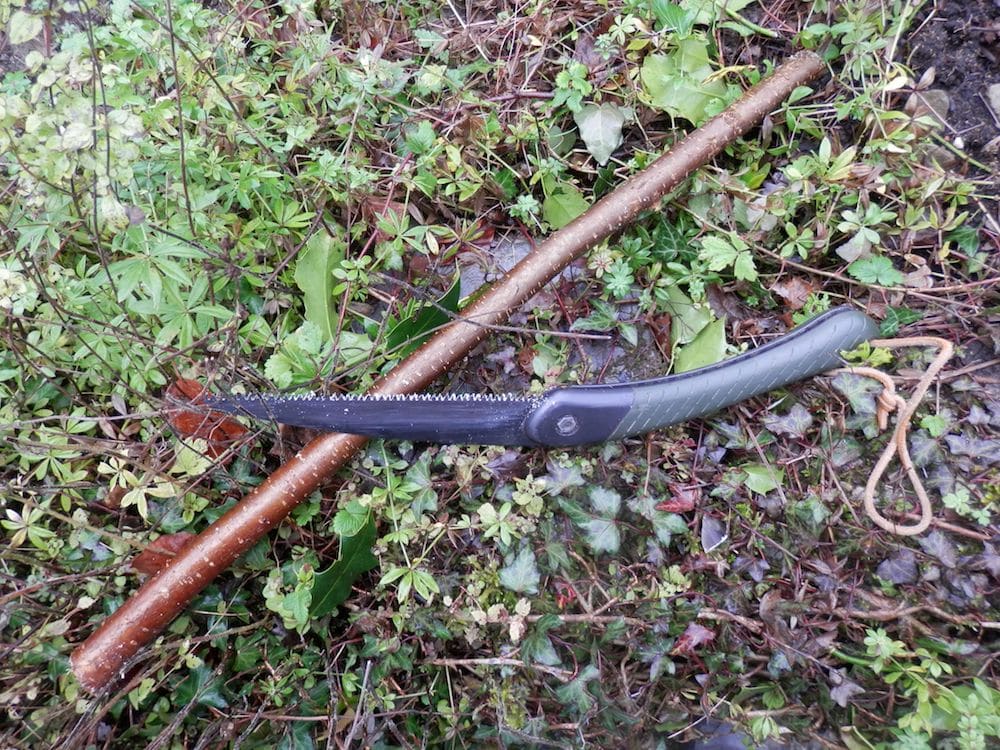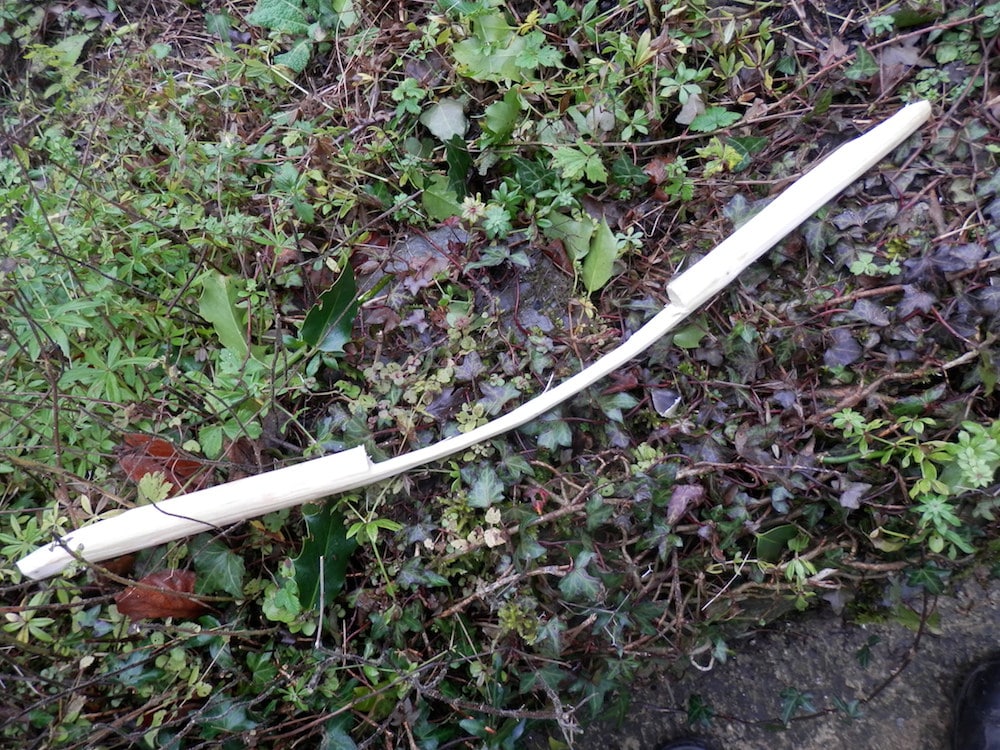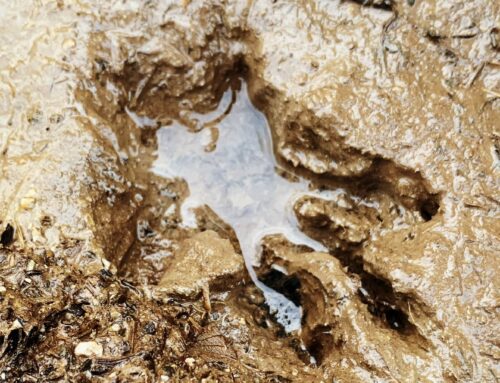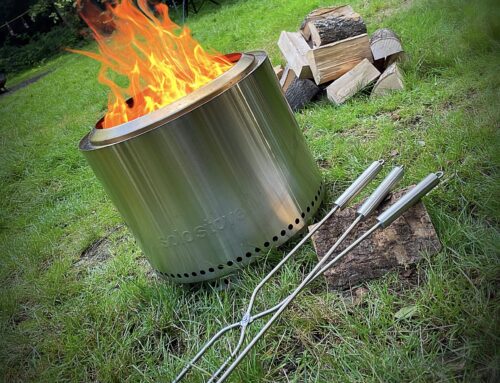In this time of isolation we’re forced to do our bushcrafting at home, so if you have the opportunity to have a little BBQ or cook something over the fire maybe some handy Tongs will help you with both.
A pair of tongs is one piece of cooking kit that I never thought I needed until I made my first ones and then I wondered how I ever did without them! Turning sausages in the pan, picking up bacon, retrieving items from inside boiling billycans – tongs are terrific bits of kit.
This quick pair of tongs was cut from a rod of hazel about 3 times as long as I wanted the working part of the tongs to be.

After I had removed the bark, I thinned the central third of the rod to between one-half and one-third its original thickness. To do this I sawed “stop cuts” into the rod and cut away between them. This thinned section is the “spring” of the tongs and needs to flex well.

I kept trying the flex of the wood as I thinned it, trying to avoid having weak bits that would hinge and break, or stiff bits that would not bend with the rest.

Warming the wood over your fire helps bend the wood without it splitting.
Once the spring is made I shaped the tips of the tongs so that they met with flat “gripping” surfaces as I squeezed the tongs, testing them by picking up leaves!


Once everything is shaped and working I find that holding them bent for use is a good idea so I drilled a couple of holes in the handles using the awl on my Swiss Army Knife and threaded a bit of cord through them tying it off at a suitable flex position for the tongs.

If you keep your tongs they will season and hold the shape they are tied in and eventually the string is redundant.
In all this carving it is important to keep your tools sharp for best results – and to avoid slips! An old friend once told me “never cut uphill”, meaning up into the grain, as this can cause splits where you don’t want ’em. Cut down or across the grain for clean cuts and never cut towards yourself – blood leaves ugly stains on the wood!
If you do decide to keep your carved cooking kit for future use, then a fine finish can be achieved by refining the cuts then sanding and oiling the wood. Use food-safe plant oils that are “setting oils”, i.e. which do not go rancid with age. I use either flaxseed oil or walnut oil. Olive oil is out as it tastes foul after it goes off!

John Fenna
Over the past 40 years John has instructed Outdoor Pursuits and led expeditions tofu flung places. He’s a published author and a self confessed ‘Gear Freak’
He also likes to wear pink at the BushMoot.





Leave A Comment
You must be logged in to post a comment.